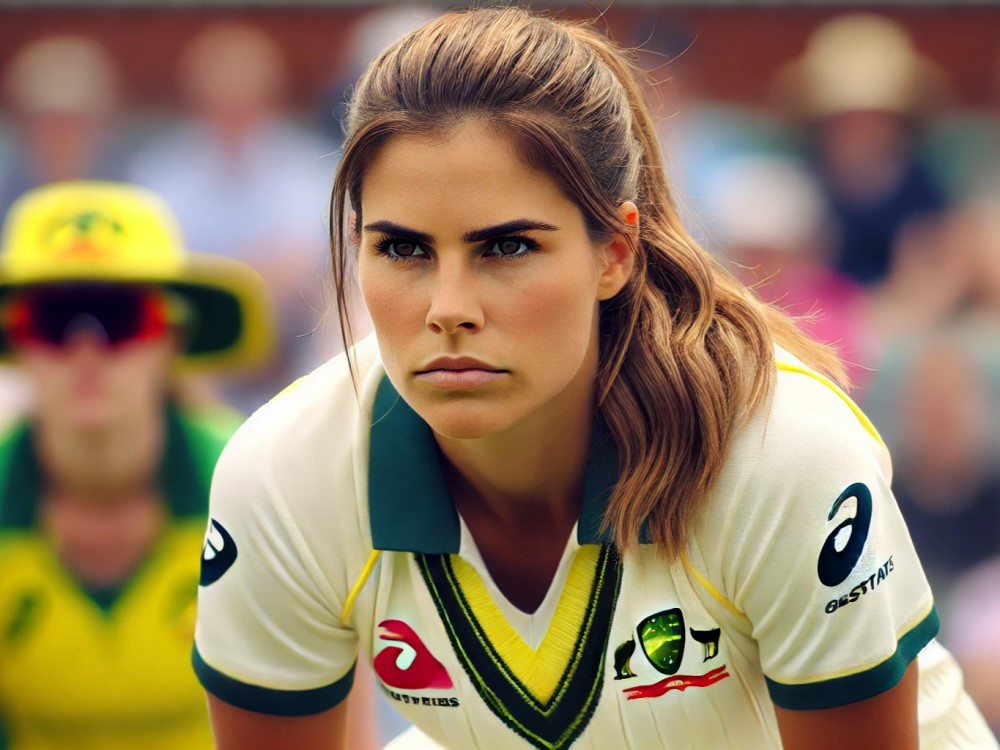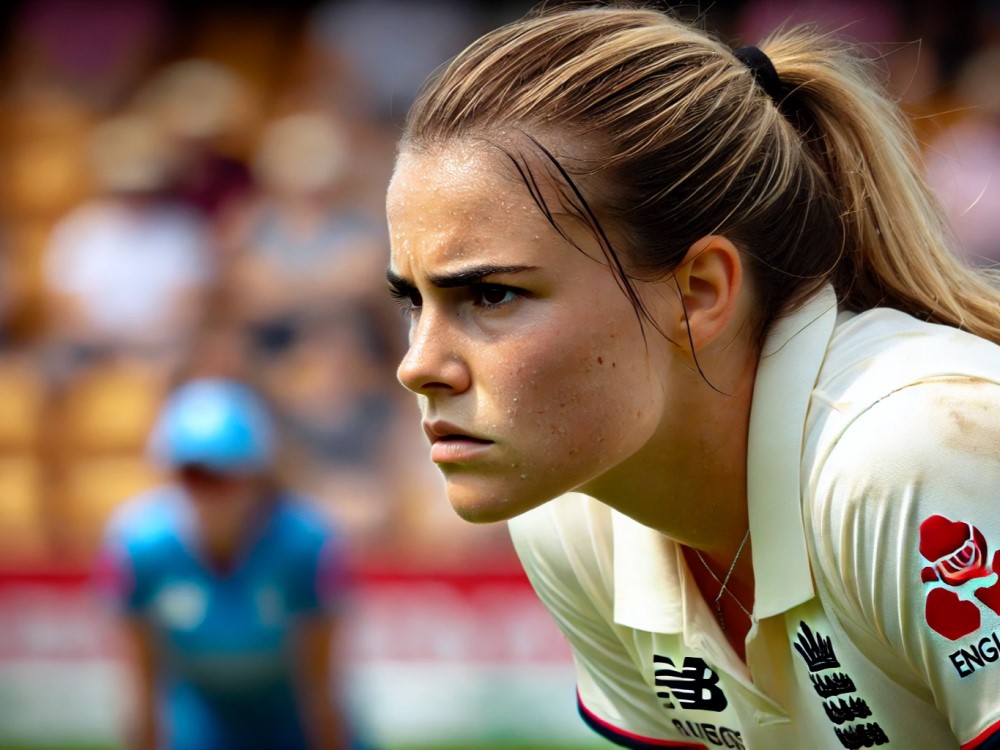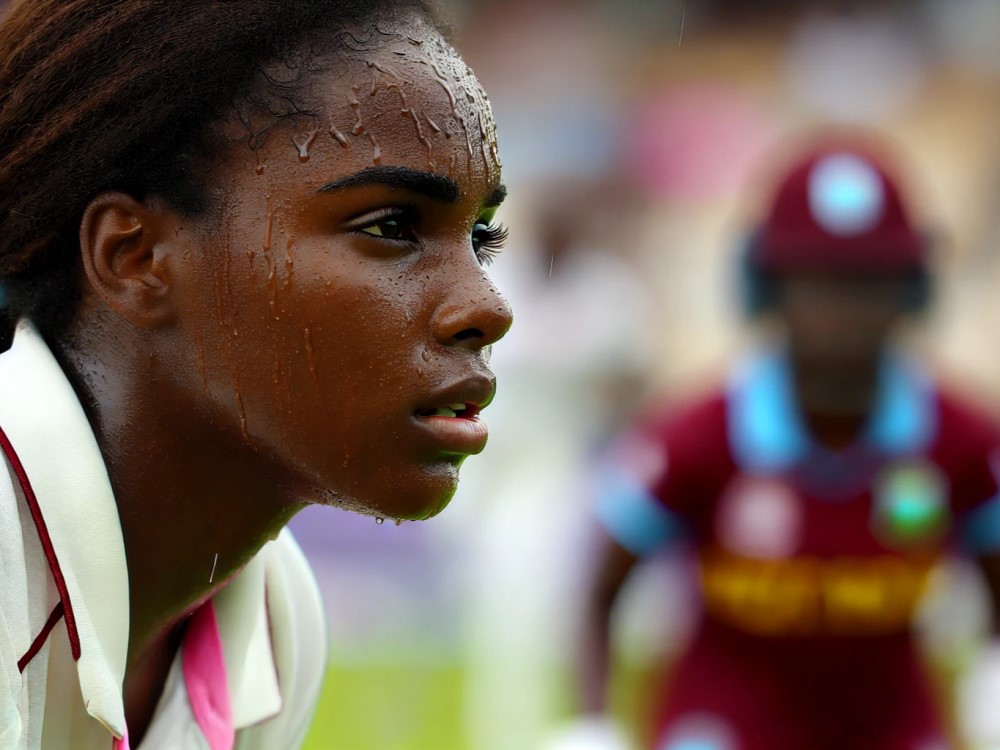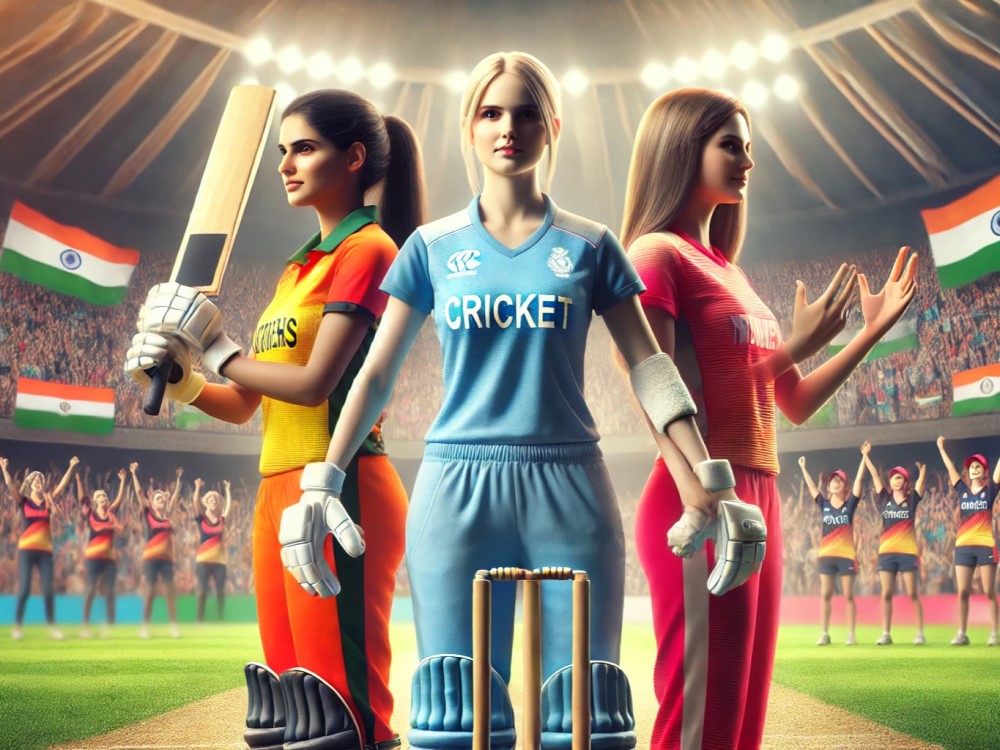
Women’s Cricket in Different Countries
The growth and evolution of women’s cricket in different countries have been nothing short of remarkable. Over the years, the sport has seen an incredible transformation, with its history tracing back to the early days when female cricketers were paving the way for future generations. Understanding the history and evolution of women’s cricket offers valuable insights into how the game has expanded its reach across the globe. Today, we celebrate not only the game’s rich history but also the prominent women cricketers who have shattered records and set new benchmarks in the sport. Their achievements and records in women’s cricket are testament to their dedication and passion for the game.
As women’s cricket gained popularity, it led to the establishment of tournaments and leagues specifically for female players, providing a platform for talent to shine. However, the journey has not been without its challenges. The challenges faced by women cricketers are numerous, ranging from societal expectations to the struggle for equal recognition. Despite these obstacles, women’s cricket has made a profound impact on society, inspiring countless young girls to take up the sport and dream big.
The influence of women’s cricket extends far beyond the pitch, as it plays a crucial role in the fight against sexism and the push for gender equality within the sports world. The movement for equal pay in women’s cricket highlights the ongoing struggle for fairness, which is further bolstered by the unwavering support of fans and the increasing interest from sponsorship opportunities. The sport’s global appeal also reflects the inclusion of diverse cultures, making it a powerful tool for cultural exchange and mutual understanding.
However, despite its growing popularity, women’s cricket still faces challenges, particularly in terms of media representation and coverage. The media coverage gap continues to be a significant hurdle, as it limits the visibility of the sport and its players. To address these issues, academies and training programs have emerged as vital resources for nurturing young talent and promoting the game at grassroots levels. Additionally, the inclusion of women’s cricket in major sporting events like the Olympic Games further solidifies its importance and ensures that the sport continues to grow and thrive on an international scale.
Through this exploration, we can better appreciate the role of women’s cricket in different countries and the remarkable strides it has made, while also recognizing the work that still needs to be done to ensure its future success.
The Evolution of Women’s Cricket in Australia: A Powerhouse of Talent

Australia has long been at the forefront of women’s cricket, establishing itself as a powerhouse in the sport. The evolution of women’s cricket in Australia is a story of dedication, talent, and systematic support that has led to remarkable success on the international stage. The Australian women’s cricket team, also known as the Southern Stars, is one of the most successful teams in the history of the sport, boasting multiple World Cup titles and a legacy of excellence.
Women’s cricket in Australia dates back to the late 19th century, but it was in the latter half of the 20th century that the sport began to gain significant traction. The establishment of the Australian Women’s Cricket Council in 1931 marked the beginning of organized efforts to promote and develop the sport. However, it was the integration of women’s cricket into Cricket Australia in 2003 that truly set the stage for the rapid growth and professionalization of the game.
Australia’s domestic women’s cricket structure is among the strongest in the world. The Women’s National Cricket League (WNCL), established in 1996, provides a competitive platform for female cricketers to hone their skills. The introduction of the Women’s Big Bash League (WBBL) in 2015 further revolutionized the sport, offering a high-profile, professional league that attracted top talent from around the world and significantly increased the visibility of women’s cricket.
The success of the Australian women’s cricket team is a testament to the strength of the country’s development programs. Cricket Australia has invested heavily in grassroots initiatives, coaching, and infrastructure, ensuring a steady pipeline of talent. The results speak for themselves: Australia has dominated international women’s cricket, with the Southern Stars winning the ICC Women’s Cricket World Cup a record seven times and the ICC Women’s T20 World Cup five times as of 2023.
Australian cricketers like Meg Lanning, Ellyse Perry, and Alyssa Healy have become global icons, inspiring young girls across the world to take up the sport. The influence of these players extends beyond the cricket field, as they advocate for gender equality and serve as role models for aspiring athletes.
In conclusion, Australia’s dominance in women’s cricket is the result of a well-established domestic structure, strategic investments in talent development, and a strong commitment to promoting the sport at all levels. The success of the Southern Stars has not only elevated the status of women’s cricket in Australia but has also set a benchmark for other countries to aspire to. As the sport continues to grow globally, Australia remains a leader in women’s cricket, both on and off the field.
The Rise of Women’s Cricket in India: A Growing Force on the World Stage
The rise of women’s cricket in India is one of the most exciting developments in the sport over the past two decades. Once considered a niche interest, women’s cricket in India has grown rapidly, with the national team emerging as a formidable force on the international stage. The journey of Indian women’s cricket reflects the broader changes in Indian society, where increased support and visibility have propelled the sport to new heights.
Women’s cricket in India has a long history, with the first recorded match taking place in 1934. However, it was not until the 1970s that organized women’s cricket began to take shape, culminating in the formation of the Women’s Cricket Association of India (WCAI) in 1973. The Indian women’s team made its international debut in 1976, but it struggled to gain the same recognition and support as the men’s game for many years.
The turning point for women’s cricket in India came in the 21st century, particularly after the Board of Control for Cricket in India (BCCI) took over the administration of women’s cricket in 2006. This transition brought much-needed resources, infrastructure, and exposure to the women’s game. The BCCI’s efforts to promote women’s cricket included better facilities, more competitive domestic tournaments, and increased media coverage.
One of the most significant milestones in the rise of Indian women’s cricket was the team’s performance in the ICC Women’s Cricket World Cup. The 2017 edition of the tournament was a watershed moment for the sport in India. The Indian women’s team, led by Mithali Raj, reached the final, capturing the imagination of millions of fans across the country. Although they narrowly missed out on winning the title, the team’s performance was widely celebrated and marked a new era for women’s cricket in India.
Since then, Indian women’s cricket has continued to grow, with players like Mithali Raj, Jhulan Goswami, and Harmanpreet Kaur becoming household names. The emergence of young talents such as Shafali Verma and Smriti Mandhana has further strengthened the team, making India a force to be reckoned with in international cricket.
The Women’s T20 Challenge, a mini-tournament launched by the BCCI in 2018, has also played a crucial role in promoting the sport. While still in its early stages, this competition has provided a platform for Indian women cricketers to showcase their skills alongside international stars, paving the way for a potential full-fledged women’s IPL in the future.
In conclusion, the rise of women’s cricket in India is a testament to the growing support, investment, and recognition the sport has received in recent years. The Indian women’s team has shown that it can compete with the best in the world, and the future looks bright as more young girls take up the sport, inspired by their heroes. As the sport continues to grow, India is poised to become a dominant force in women’s cricket on the global stage.
Women’s Cricket in England: A Legacy of Pioneers and Champions

England has played a pivotal role in the history and development of women’s cricket, boasting a rich legacy of pioneers, champions, and significant milestones. As the birthplace of cricket, England was also home to the earliest recorded women’s cricket matches, with the first known game taking place in 1745. Over the centuries, women’s cricket in England has evolved from a grassroots pastime to a professional sport, with the England women’s cricket team emerging as one of the most successful and respected teams in the world.
The formalization of women’s cricket in England began in the late 19th and early 20th centuries. The Women’s Cricket Association (WCA) was established in 1926, providing a structured organization for the sport and setting the stage for the first women’s international matches. England’s women’s team made their international debut in 1934, playing against Australia in what was the first-ever women’s Test match series. This series marked the beginning of a long-standing rivalry between the two nations, one that continues to this day in the form of the Women’s Ashes.
England’s success in women’s cricket has been underpinned by a strong domestic structure. The Women’s County Championship, established in 1980, provided a competitive platform for players to develop their skills and compete at a high level. The introduction of the Women’s Cricket Super League (WCSL) in 2016 further enhanced the domestic game, attracting top international talent and raising the profile of women’s cricket in England.
The England women’s cricket team has enjoyed significant success on the international stage, winning multiple ICC Women’s Cricket World Cups. Their victory in the inaugural 1973 World Cup, held in England, was a historic moment, establishing the team as pioneers in the sport. The 2017 ICC Women’s Cricket World Cup, also hosted by England, was another landmark event. The England women’s team, led by Heather Knight, captured the title in a thrilling final against India at Lord’s, a match that drew record crowds and television audiences, further cementing the team’s status as champions.
The contributions of players like Charlotte Edwards, Claire Taylor, and Sarah Taylor have been instrumental in England’s success. These players not only excelled on the field but also served as role models for young girls aspiring to play cricket. Their achievements have inspired a new generation of female cricketers, ensuring that the legacy of women’s cricket in England continues to thrive.
In recent years, the England and Wales Cricket Board (ECB) has made significant strides in promoting and professionalizing women’s cricket. The introduction of central contracts in 2014 was a major step forward, providing financial security and professional opportunities for female cricketers. The ECB’s commitment to growing the women’s game is also evident in the launch of The Hundred, a new tournament format that features both men’s and women’s teams and has brought women’s cricket to a broader audience.
In summary, women’s cricket in England is built on a legacy of pioneers, champions, and continuous development. The England women’s cricket team has a proud history of success, and the support from the ECB has ensured that the sport continues to grow and flourish. As the sport continues to evolve, England remains a central figure in the global landscape of women’s cricket, inspiring future generations of cricketers and fans alike.
Women’s Cricket in South Africa: Overcoming Challenges to Achieve Success
Women’s cricket in South Africa has undergone a remarkable transformation over the past few decades, overcoming numerous challenges to establish itself as a competitive force on the international stage. Despite the historical barriers and social issues that have impacted the development of women’s sports in South Africa, the women’s cricket team, known as the Proteas Women, has made significant strides, earning respect and admiration within the cricketing world.
The history of women’s cricket in South Africa dates back to the early 20th century, with the first recorded women’s matches taking place in the 1920s. However, the sport faced significant obstacles during the apartheid era, with limited opportunities and resources available for women, particularly for those from marginalized communities. The isolation of South African sports from the international community due to apartheid further hindered the growth of women’s cricket during this period.
The post-apartheid era brought new opportunities for women’s cricket in South Africa. The establishment of the United Cricket Board of South Africa (UCBSA) in 1991, which later became Cricket South Africa (CSA), marked the beginning of a more inclusive and structured approach to the development of the sport. The South African
women’s cricket team made its international debut in 1997, participating in the ICC Women’s Cricket World Cup. Although they were newcomers to the international scene, the team quickly showed promise, and their participation in global tournaments helped raise the profile of women’s cricket in South Africa.
One of the key factors in the growth of women’s cricket in South Africa has been the support from Cricket South Africa (CSA). CSA has invested in grassroots development programs, coaching, and infrastructure to nurture young talent and promote the sport across the country. The establishment of provincial competitions, such as the CSA Women’s Provincial League, has provided a platform for female cricketers to showcase their skills and gain valuable experience. These initiatives have played a crucial role in building a pipeline of talent for the national team.
The Proteas Women’s team has seen significant improvements in performance over the years, becoming a competitive force in international cricket. The team’s breakthrough moment came during the 2017 ICC Women’s Cricket World Cup, where they reached the semifinals for the first time. Led by players like Dane van Niekerk, Marizanne Kapp, and Shabnim Ismail, the Proteas Women have consistently challenged some of the top teams in the world, earning a reputation for their resilience and determination.
Another milestone in the development of women’s cricket in South Africa was the introduction of professional contracts for female cricketers by CSA in 2013. This move provided financial security and allowed players to focus on their cricket careers full-time, leading to further improvements in the team’s performance. The increased visibility of women’s cricket in South Africa, aided by media coverage and broadcasting of matches, has also contributed to growing interest and support for the sport among fans.
Despite the progress made, women’s cricket in South Africa still faces challenges, including issues related to funding, facilities, and broader societal perceptions of women in sports. However, the success of the Proteas Women’s team has been a source of inspiration and pride, encouraging more young girls to take up the sport and pursue their dreams.
In conclusion, women’s cricket in South Africa has made significant strides despite the challenges it has faced. The support from CSA, the introduction of professional contracts, and the team’s strong performances on the international stage have all contributed to the growth and success of the sport. As women’s cricket continues to evolve in South Africa, the Proteas Women’s team is poised to achieve even greater heights, inspiring the next generation of female cricketers and helping to promote gender equality in sports.
Women’s Cricket in the West Indies: A Spirit of Resilience and Flair

Women’s cricket in the West Indies is characterized by a unique blend of resilience, flair, and a deep love for the game. The West Indies women’s cricket team, affectionately known as the Windies Women, has grown from humble beginnings to become a competitive force in international cricket, known for their exciting style of play and indomitable spirit. The journey of women’s cricket in the West Indies reflects the region’s rich cultural heritage and the enduring passion for cricket that unites the Caribbean islands.
The history of women’s cricket in the West Indies can be traced back to the early 20th century, with organized women’s matches taking place as early as the 1930s. However, the development of the sport was slow, with limited resources and opportunities for female cricketers. It wasn’t until the 1970s that women’s cricket began to gain more recognition, leading to the formation of the West Indies Women’s Cricket Federation in 1973. This organization played a crucial role in promoting the sport and organizing domestic competitions across the Caribbean.
The Windies Women’s team made their international debut in 1976, participating in the inaugural Women’s Cricket World Cup. While the team struggled in the early years, they gradually improved, gaining valuable experience and building a competitive squad. The establishment of the West Indies Cricket Board (WICB) in 1996 brought more structure and support to women’s cricket in the region, helping to elevate the sport’s status and attract more players.
One of the defining moments for women’s cricket in the West Indies came in 2016 when the Windies Women won their first ICC Women’s T20 World Cup. Led by the dynamic Stafanie Taylor, the team defeated Australia in the final, showcasing their talent, flair, and fighting spirit. This historic victory was a watershed moment for women’s cricket in the Caribbean, inspiring a new generation of female cricketers and raising the profile of the sport across the region.
The success of the Windies Women’s team has been driven by a blend of experienced players and emerging talents. Stafanie Taylor, Deandra Dottin, and Anisa Mohammed have been key figures in the team’s success, bringing a combination of leadership, skill, and charisma to the squad. Their performances have not only brought glory to the West Indies but have also played a crucial role in growing the fan base for women’s cricket in the region.
Despite the challenges faced by women’s cricket in the West Indies, including issues related to funding, facilities, and travel, the sport has continued to grow. The passion for cricket in the Caribbean is unmatched, and this love for the game has been a driving force behind the development of women’s cricket. Community support, coupled with initiatives from the WICB, has helped to nurture young talent and ensure that women’s cricket remains an integral part of the region’s sporting landscape.
In conclusion, women’s cricket in the West Indies is a story of resilience, flair, and an unwavering passion for the game. The Windies Women’s team has overcome numerous challenges to achieve success on the international stage, inspiring fans and players alike with their exciting style of play. As the sport continues to grow in the Caribbean, the Windies Women are poised to build on their successes and further establish themselves as one of the most exciting teams in women’s cricket.
The Global Impact of Women’s Cricket: Uniting Nations and Breaking Barriers

Women’s cricket has become a global phenomenon, uniting nations and breaking down barriers in ways that go beyond the boundaries of the sport. The growth of women’s cricket in different countries has not only expanded the reach of the game but has also had a significant impact on gender equality, social inclusion, and international relations. As more countries embrace and invest in women’s cricket, the sport continues to serve as a powerful tool for social change and global unity.
One of the most significant impacts of women’s cricket is its role in promoting gender equality. In many countries, the success of female cricketers has challenged traditional gender roles and stereotypes, inspiring young girls to pursue their dreams and break through societal barriers. The visibility of women’s cricket on global platforms, such as the ICC Women’s Cricket World Cup and the ICC Women’s T20 World Cup, has helped to shift perceptions and create new opportunities for women in sports. The achievements of players like Australia’s Ellyse Perry, India’s Mithali Raj, and England’s Heather Knight have become symbols of empowerment, motivating girls and women worldwide to participate in sports.
Women’s cricket has also played a crucial role in fostering social inclusion and community engagement. In countries with diverse populations, such as India, South Africa, and the West Indies, women’s cricket has brought people from different backgrounds together, creating a sense of unity and shared purpose. Community programs, grassroots initiatives, and school cricket competitions have introduced the sport to young girls from all walks of life, providing them with a platform to showcase their talents and build confidence. These initiatives have not only grown the sport but have also contributed to social cohesion and the development of life skills.
The global reach of women’s cricket has also had a positive impact on international relations. Cricket diplomacy, where sporting events serve as a means of promoting dialogue and cooperation between nations, has played a key role in strengthening ties between countries. Matches between rival nations, such as India and Pakistan, have often carried a message of peace and friendship, transcending political tensions. The spirit of sportsmanship and mutual respect that characterizes women’s cricket has helped to build bridges between cultures and foster greater understanding among nations.
In addition to its social impact, women’s cricket has also driven economic growth and development in many regions. The rise of professional leagues, increased sponsorship, and growing media coverage have created new revenue streams and employment opportunities within the sport. Countries like Australia, England, and India have led the way in professionalizing women’s cricket, setting a benchmark for others to follow. The economic benefits of women’s cricket extend beyond the sport itself, contributing to the broader development of sports infrastructure and tourism in host countries.
The global impact of women’s cricket is profound and far-reaching. As the sport continues to grow, it is playing an increasingly important role in promoting gender equality, social inclusion, and international relations. The achievements of female cricketers and the success of women’s cricket in different countries have inspired a new generation of players and fans, driving positive change both on and off the field. Women’s cricket is more than just a game—it is a movement that is uniting nations and breaking barriers, making the world a better place through the power of sport.





